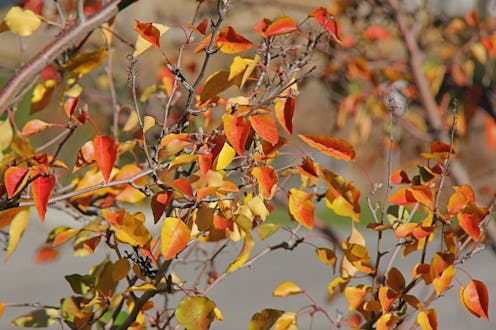Life
How An Equinox Is Different From A Solstice

The autumnal equinox signifies the official kick-off to the fall season — even though, let's be honest, we have all been downing pumpkin spice lattes and looking forward to cooler weather since September 1. Summer is truly gone for another year, and you can celebrate its ultimate demise come September 22 by draping yourself in thick and cozy scarves and sweaters. But the bi-annual equinox is not the same as the solstice (which also occurs twice a year), and the differences between them are pretty big.
All four seasonal holidays are certainly worth celebrating, but it's about way more than marking the first calendar day of a new season. The autumnal equinox is particularly fun, because there are so many pumpkin-flavored things you can eat and drink, and so many nights ahead when you can justifiably stay home and lounge with a book. You know the holiday season is peeking its head out from behind the corner, and you can live life to the chillest while wearing soft sweaters and richly colored accessories — all whilst casually sipping on a hot, sweet beverage. Does it get any better than right now, in this very moment? Here are the five major differences between the equinox and the solstice, so you can celebrate it properly. Don't let it pass you by.
1. It's a Seasonal Thing
The two solstices and equinoxes occur at the start of each season — one in spring, summer, fall, and winter. The equinoxes take place in March and September, for spring and fall, and the solstices occur in June and December, for summer and winter.
2. The Hours of Daylight Differ
The equinoxes not only mark the start of spring and fall, but also the two days during the year when there is an (almost) equal amount of daylight and darkness in a 24-hour period. The solstices mark the longest day of the year (summer) and the shortest day of the year (winter).
3. They Have Different Latin Meanings
"Equinox" is derived from two Latin words: "aequus" (equal) and "nox" (night). "Solstice" is derived from the Latin words "sol" (sun) and "sistere" (to make stand).
4. The Equator Plays An Important Role
During the summer and winter solstice, we're honoring the sun when it reaches its northern most and southern most point (respectively) in the sky at local noon, whereas the equinoxes represent the two days when the sun is directly over the equator before it heads in either direction.
5. It's Chill vs. No Chill
The equinox occurs during fall and spring, the least extreme seasons of all. During both, you're celebrating the equal amount of time the sun and moon get to shine. You're probably also wearing a light jacket, and not worrying too much about the weather — thus representing the "chill." The solstices, on the other hand, are all about extremes. It's winter and summer, so extreme cold and extreme heat. And they also signify the most and least amount of daylight. Solstices have zero chill. Enjoy the lack of drama in the universe right now.
Image: Photography by Alexandra Rudge/Moment/Getty Images; Giphy